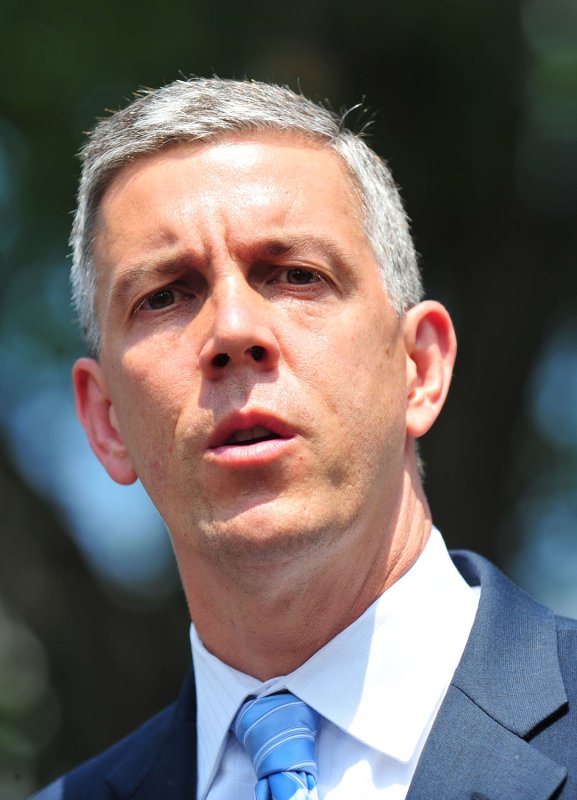1 of 2 | Education Secretary Arnie Duncan urged lawmakers to commit to continued focus on reducing overall student debt and default rates after the official three-year federal student loan cohort default rate showed a decrease to 11.8 percent for student borrowers who entered repayment in 2012. Photo by Kevin Dietsch/UPI |
License Photo
WASHINGTON, Sept. 30 (UPI) -- The percentage of student borrowers who have failed to pay down their education loans a year after leaving college dropped slightly, offering a glimmer of hope as millions struggle with education-related debt.
The Department of Education showed 11.8 percent of students who left school in the fiscal year ending Sept 30, 2012 had defaulted on their student loans by Sept. 30, 2014. While still high, the rate is down from 13.7 percent in 2011. The decrease was seen in all sectors of higher education, including public, private and for-profit institutions.
This downward trend continued from 2010, when the percent of students who defaulted was 14.7.
Secretary of Education Arne Duncan urged lawmakers to commit to continued focus on reducing overall student debt and default rates. About 43 million Americans owe an estimated $1.2 trillion in student loan debt. Of that, about $103 billion is in default, which is defined as a borrower who goes at least 360 days without making a payment.
"The Obama Administration has taken historic steps to give borrowers more options to manage their student debt and stay on track to repayment and to hold institutions accountable for improving student outcomes," Duncan said. "However, even with these promising signs of progress, we know much work remains ahead. I hope that Congress will join us in efforts to improve student outcomes and improve accountability in higher education."
More than 5.1 million borrowers entered repayment in 2012. Of those, nearly 611,000 defaulted on their loans before Sept. 30, 2014, down from 650,000 the year prior for a 6 percent decrease.
The biggest decline was seen in the for-profit college sector, dropping to 15.8 percent in default in 2012 from 19.1 percent in default in 2011. Private schools saw a decrease in default rates from 7.2 percent in 2011 to 6.8 percent in 2012. In the public sector, 11.7 percent of students defaulted in 2012, compared to 12.9 percent in 2011.
Earlier this year, the White House unveiled its Student Aid Bill of Rights to strengthen consumer protections for student loan borrowers. Under federal law, higher education institutions with default rates of 30 percent or greater must establish a default-prevention task force and run the risk of losing federal aid availability.
This year, two public community colleges, one private nonprofit institution and 12 for-profit schools run the risk of losing federal aid eligibility. They are: Umpqua Community College in Oregon; Ohio State College of Barber Styling; Guti, the Premier Beauty & Wellness Academy in Florida; United Tribes Technical College in North Dakota; Capstone College in California; LT International Beauty School in Pennsylvania; Florida Barber Academy; Jay's Technical Institute in Texas; Memphis Institute of Barbering; Northwest Career College in Nevada; Northwest Regional Technology Institute (Pa.); Eastern West Virginia Community & Technical College; Coast Career Institute (Calif.); San Diego College; and Profile Institute of Barber-Styling in Georgia.















